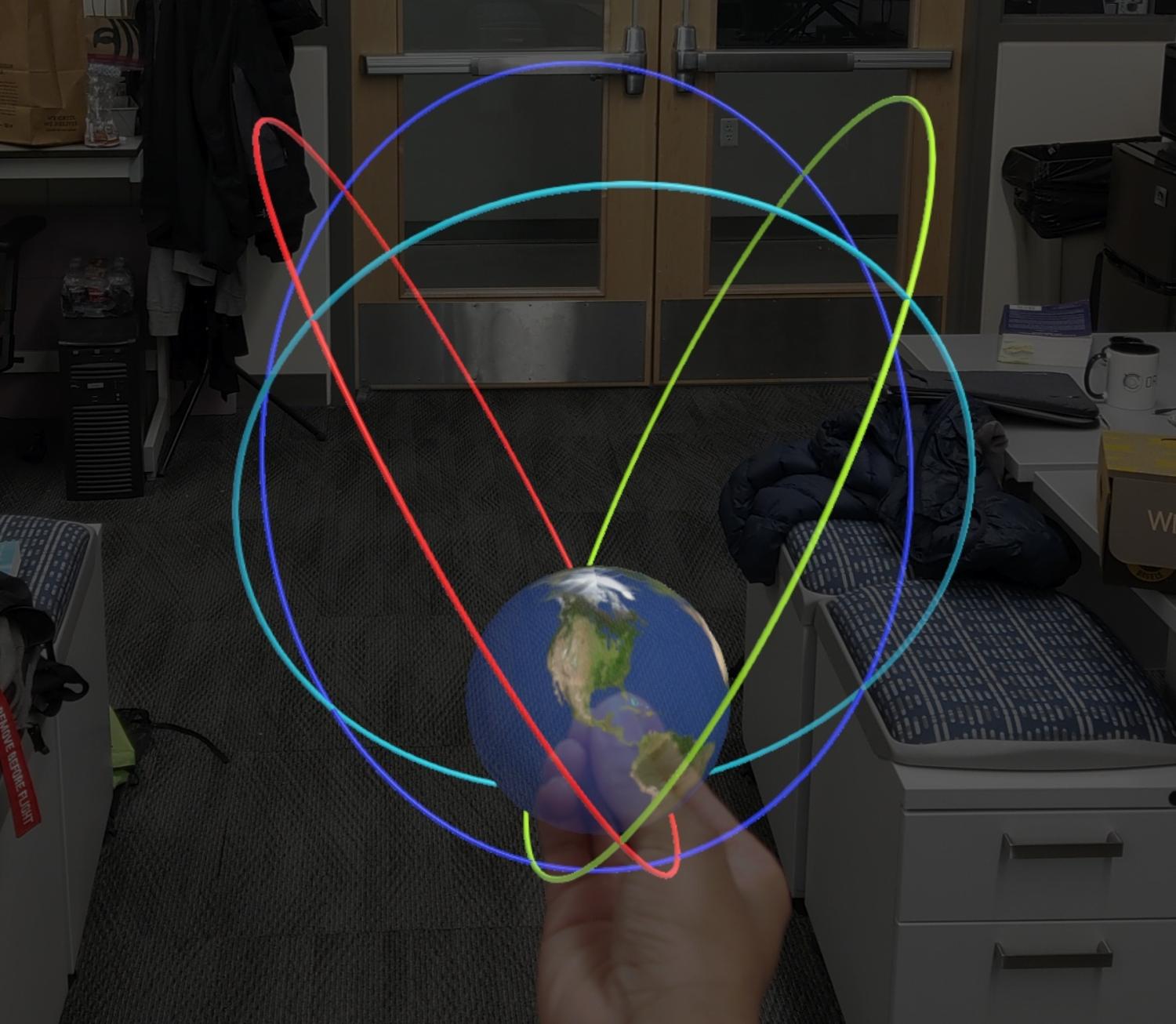PhD student designing augmented reality for space missions

Dezell Turner loves orbital design; a critical step in planning any space mission, and he is plotting out a way to streamline the complex process with an interactive, augmented reality tool.
“The current methods of trajectory design for cislunar space – missions that go beyond low Earth orbit to the Moon – are very complicated and not intuitive. I want to change that,” Turner said.
As an aerospace PhD student at the University of Colorado Boulder, Turner discussed ideas with his advisor. They realized a mixed reality system would be a major advance, allowing engineers and mission planners to quickly design and manipulate trajectories in a 3D real-world environment.
“Being able to see something in 3D space is hugely helpful, but this goes beyond that,” Turner said. “The system will allow you to physically interact with virtual objects. You’re wearing a headset and are able to grab holograms and manipulate them with your hands. I can drag an orbit to do what I want. I can change the end point of a transfer orbit and see how it shifts overall.”
It is a huge undertaking. Turner is effectively designing a new piece of software on his own, but it has major promise.
“Designing cislunar trajectories is much more complex than designing trajectories around the Earth. With cislunar trajectories, you have the Earth and the Moon’s gravity both pulling on the spacecraft, and sometimes the orbits can take unexpected shapes,” he said.
Despite the challenge, Turner is well suited to the task. He has a longstanding passion for astrodynamics and has been honored multiple times for educational excellence. He is currently a National Science Foundation Graduate Research Fellow, Smead Scholar, and a GEM Fellow. Each program provides funding for promising young scientists and engineers pursuing graduate education, with GEM focused on expanding access for underrepresented minorities.
Turner said GEM is important to bringing more viewpoints to science and engineering problems.

Example of the mixed reality trajectory software.
“I think it’s pretty imperative that we have a more diverse space workforce,” he said. “Space is about tackling really hard problems and you can’t do that as well if you aren’t considering all the angles.”
Despite his fellowship success and recognition by internship programs like the Matthew Isakowitz Fellowship and Space Workforce 2030, at times Turner still doubts his talent.
“These programs have helped connect me to all kinds of different people and really tackle my imposter syndrome. I’m grateful to have that access and hope I can pay it forward. They help me remember there is in a place in this industry for me and I hope I can help other people see that they belong too,” he said.
Despite any lingering fears, Turner loves what he is doing and the impact aerospace work can have. During an internship at the Aerospace Corporation, he was part of a team of interns that developed a low cost GPS architecture for cislunar space. It is a design the company continues to advance.
“ The coolest part was when they told us they would be carrying the project forward. It reminded us that it wasn’t a game for interns, it was a real project with real impact,” Turner said. “It was an amazing experience.”
As a second year PhD student, Turner still has 2-3 years left in his education and is leaning toward a career in industry.
“I’m like a kid in the candy store except the candies are fuels and spacecraft,” he said. “Aerospace is such a wonderful place to be. I’m very fortunate.”

